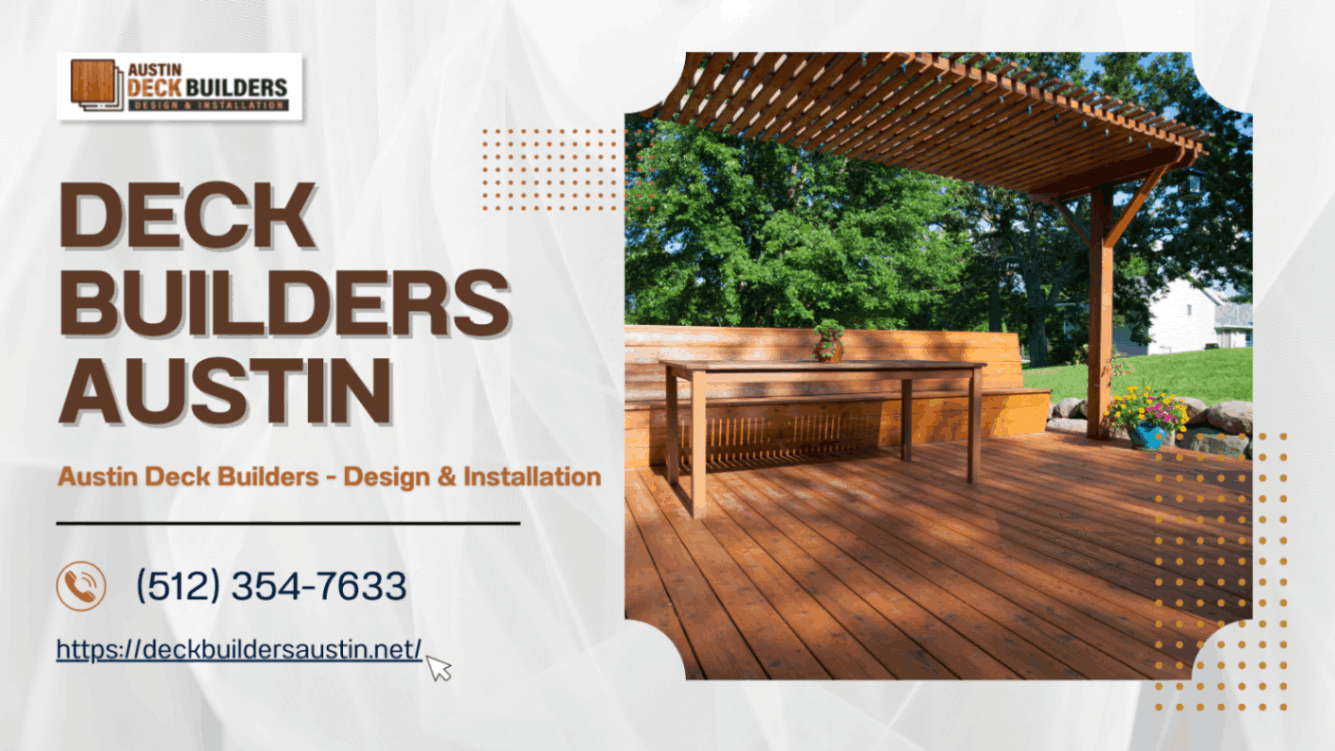

Austin Deck Builders – Transforming Backyards into Everyday Retreats
A well-built deck should be more than just an addition—it should be the heart of your outdoor living. At Austin Deck Builders, we specialize in crafting custom decks that feel like natural extensions of your home. Whether you’re dreaming of a cozy corner to relax or a spacious outdoor area to entertain, our team brings expert craftsmanship and personalized design to every project.
We begin with a collaborative consultation to understand your space, needs, and aesthetic. Whether you prefer the warmth of natural wood or the longevity of composite decking, we offer durable materials that withstand Austin’s sun, storms, and seasonal shifts—while matching your style. From multi-level layouts to custom features like built-in seating and sleek railings, every element is tailored with care.
Our decks are built to last. With a focus on structural integrity and safety, we use only high-quality materials and proven construction techniques. Whether it’s a modest upgrade or a full-scale build, we apply the same meticulous attention to every detail—from the foundation to the final finish.
We believe in honest communication and a smooth process. You’ll always know what to expect with clear timelines, transparent pricing, and consistent updates. Our crews work respectfully and efficiently, keeping your property clean and minimizing disruption.
With years of experience and a reputation for reliable service, Austin Deck Builders is your trusted partner for outdoor transformations. We take pride in building decks that not only look great—but become your favorite place to unwind, entertain, and make memories.
Ready to turn your backyard into your go-to space? Contact Austin Deck Builders – Design & Installation and let’s get started.
Composite decking materials come with specific installation instructions from manufacturers that are crucial to follow for optimal performance and appearance. One common mistake is neglecting these guidelines in favor of generic installation practices or personal experience with traditional wood decks. This can lead to improper spacing, inadequate fastening, and ultimately, a compromised deck structure. It's essential to adhere strictly to the manufacturer's recommendations regarding the type of hardware to use, spacing between boards, and appropriate methods for cutting and handling the material.
Proper spacing between composite decking boards is vital for allowing for thermal expansion and contraction as well as drainage. Skimping on this can result in buckling and unsightly gaps. Additionally, ensuring there is enough clearance below the deck for air circulation helps prevent moisture buildup which can lead to mold and mildew growth. Failing to account for ventilation not only affects the longevity of the deck but can also void warranty claims if the damage is related to poor installation practices.
The roof's structural integrity greatly influences the performance of a composite deck installed beneath it. A common error during installation is using inadequate framing techniques that do not support composite materials' unique properties. Composite decking often requires closer joist spacing than traditional wood planks due to its different composition and weight distribution needs. Overlooking this critical aspect can result in sagging or bouncing deck boards, leading to an unsafe surface area beneath your roof space.
Fasteners play a pivotal role in securing composite decking properly; however, they are frequently overlooked during installation. Using nails instead of screws or choosing non-corrosive screws when working in wet environments can be detrimental to both safety and longevity of your deck structure—it's imperative that the correct fasteners specified by the manufacturer are used throughout construction. Inappropriate fastener choice not only risks structural failure but may also mar the aesthetic finish of your composite deck under your roof sanctuary.
| Entity | Definition |
|---|---|
| Multi-Level Decks | Decks designed with multiple connected levels for larger outdoor spaces or sloped yards. |
| Wraparound Decks | Decks that extend around multiple sides of a home, providing expansive outdoor living space. |
| Detached Decks | Standalone decks not attached to the home, often used for garden or poolside settings. |
| Covered Decks | Decks built with overhead protection like roofs or pergolas to provide shade and shelter. |
| Deck Expansion | The process of enlarging an existing deck to accommodate more space or features. |
Begin by dreaming big. Visualize how you want your new deck to look and how it will be used. Will it be a tranquil retreat for reading and lounging or a vibrant space for entertaining guests? Consider the architectural style of your home and strive for a design that complements its aesthetics. Think about the view from your deck, the direction of sun exposure, and whether you desire any built-in features like seating, planters, or a fire pit.
Safety is paramount when planning your deck remodel. Inspect the current structure for signs of damage such as rotting wood or unstable foundations. Determine if repairs can be made or if a complete replacement is necessary. Consult with professionals to understand building codes and permits required in your area, ensuring your remodel meets all safety standards.
Choosing materials for your deck is both a design and practical consideration. Would traditional wood suit your vision, or are low-maintenance composite materials more aligned with your lifestyle? Factor in longevity, maintenance needs, cost, and ecological impact before making a decision. Remember that materials must not only meet aesthetic desires but also withstand weather conditions specific to your region.
If you're including an overhead structure such as a pergola or roof on part of the deck, plan this aspect carefully to ensure it harmonizes with the existing roofline of your home. The roofing material should match or complement what's on top of your house and provide adequate protection from sun and rain while also allowing natural light when desired.
Once you have a clear vision for your deck remodel, draft detailed plans that include dimensions, materials, special features, and aesthetic elements such as color schemes or finishes. Itemize every aspect to formulate an accurate budget—taking into account costs for materials, labor if hiring professionals, permits, tools needed for DIY aspects, furniture purchases, and contingency funds for unforeseen expenses.
For certain aspects of the remodel—especially structural work—it’s wise to hire qualified professionals who can ensure everything is completed safely and up to code. Do thorough research; seek recommendations from friends or online reviews; then obtain multiple bids before selecting contractors who are licensed, insured, experienced with similar projects—and who share an understanding of your dream vision.
Finally yet importantly is scheduling. Aim for a time frame that suits climatic conditions conducive to outdoor work while also accommodating personal events that might clash with construction activities. Be prepared for some disruption during this period—noise levels may increase while access to portions of outdoor space could be limited temporarily—but keep focused on the excitement ahead: soon enough you’ll have transformed visions into reality on this dream deck remodel underpinned by careful planning every step along the way.

Composite decks last 25-50 years with low maintenance. Pressure-treated wood decks typically last 10-20 years with regular care.
Common causes include water damage, UV exposure, improper drainage, pests, and poor construction. Use quality materials, seal wood decks, and inspect regularly.
Popular options include aluminum, vinyl, composite, and pressure-treated wood, depending on the existing deck and budget.